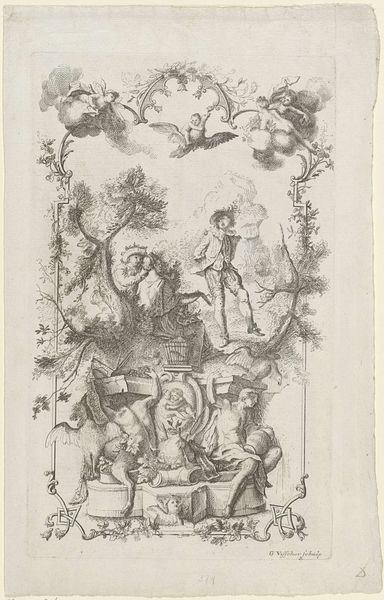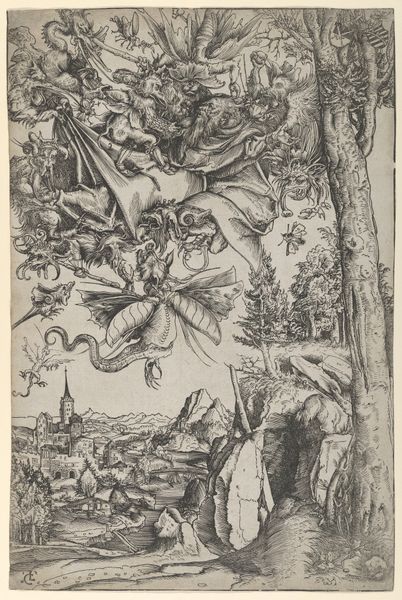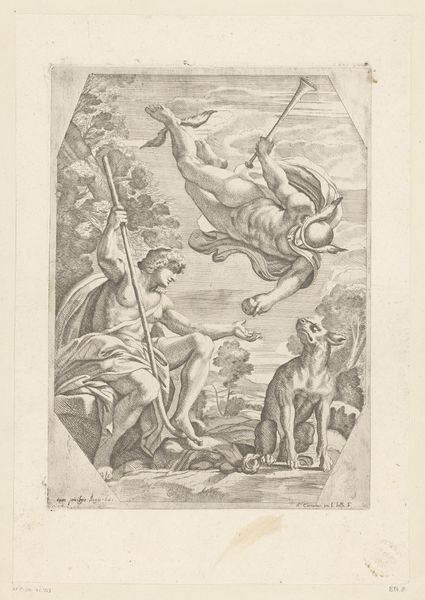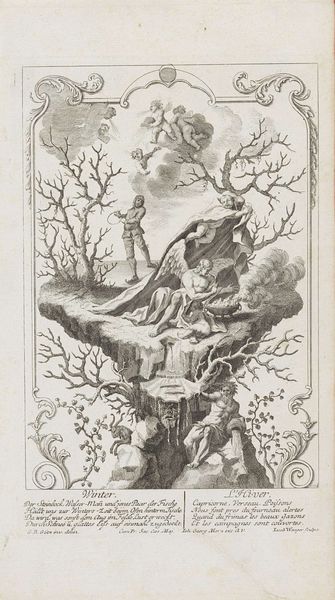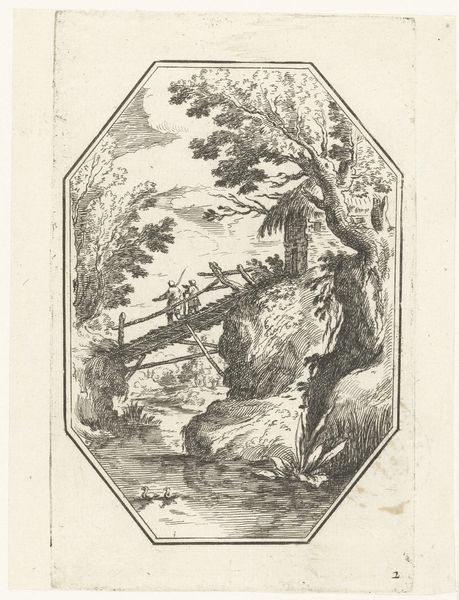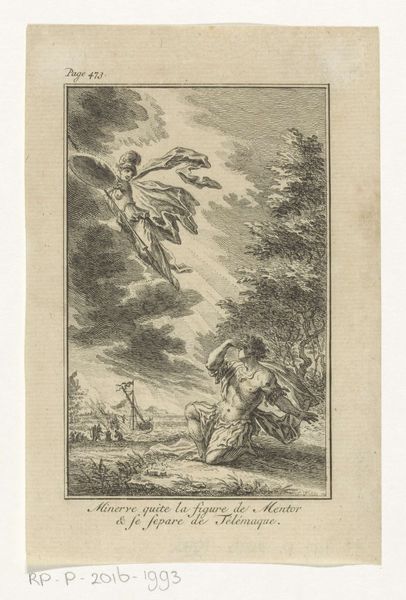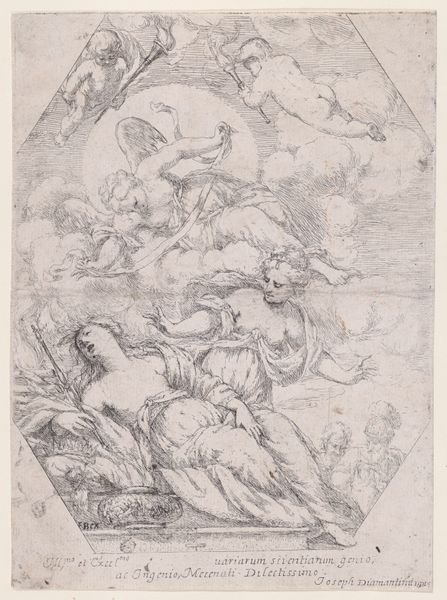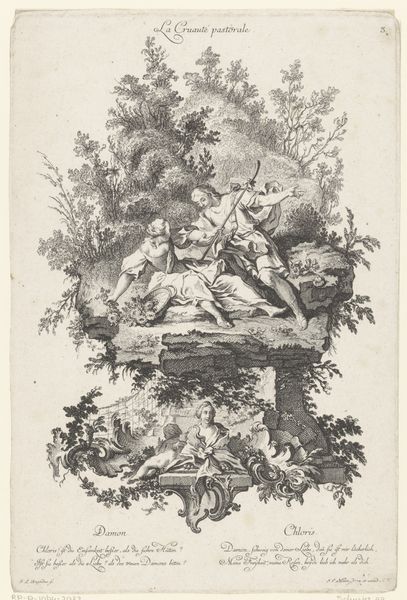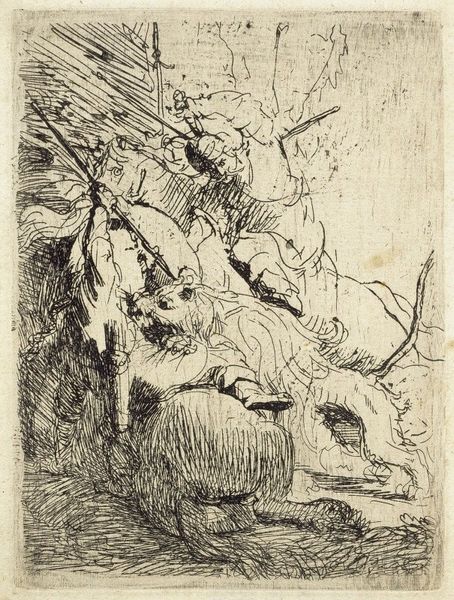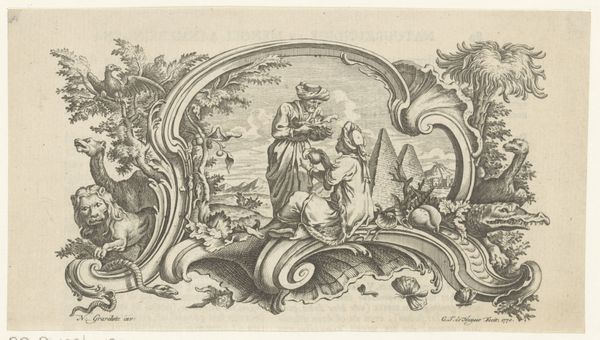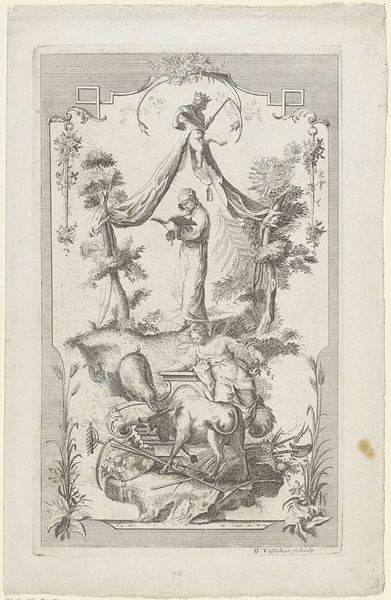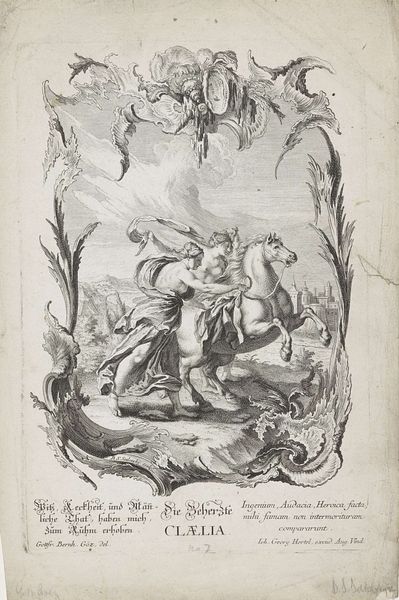
print, engraving
#
allegory
#
baroque
# print
#
etching
#
history-painting
#
engraving
Dimensions: height 271 mm, width 178 mm
Copyright: Rijks Museum: Open Domain
Curator: The frenetic energy just grabs you, doesn't it? I mean, look at this swirl of action captured in Gerrit Visscher’s engraving and etching, "Panel Ornament with a Warrior on a Base with War Equipment," created between 1690 and 1710. Editor: It does feel almost feverish! All these symbols mashed together… warfare, nature, putti. It's like a dreamscape of 17th-century anxieties. Is that warrior about to… dance off a drum kit? Curator: Possibly! Consider the period: elaborate ornamentation, the Baroque era, thrived on dramatic flourish and layered meanings. Notice the cherubs floating above, bearing a radiant, almost solar emblem. They act as divine witnesses, or perhaps even arbiters, to the martial display below. Editor: Arbiters with tiny trumpets. I can't quite tell if it's glorifying war or trying to grapple with its… excess. It's got that classic Baroque tension – the push and pull between grandeur and almost grotesque detail. And there’s also this very strong contrast in miniature here, too – the tiny putti set against the imposing warrior. Curator: The iconography, while complex, suggests a clear narrative. The warrior atop the spoils, surrounded by drums, weapons, and banners, is clearly victorious. He represents a heroic figure, maybe a commander, embodying courage and triumph. And what did you make of the depiction of the satyr with the bow and arrow below? I mean, is it supposed to show how power can control and distort our natural selves? Editor: Or maybe… that warfare also demands a return to some very elemental form. This stripping away and simplification in the image reflects just that. But ultimately the war machinery crushes every little remnant of wildness – the lamb, the satyr, every corner. Curator: It also makes me wonder if Visscher deliberately contrasted order versus disorder through the rigid lines in the geometric structures of the lower part and the wildness of the figures. This is, after all, a “panel ornament,” not necessarily meant for detached contemplation but designed for functional incorporation within architecture, say, or furniture. Editor: Right, a snippet in a bigger story. But that's the fascinating paradox, isn't it? These "ornaments" hold all this complex symbolic weight, yet their intention is purely decorative. I find myself caught between appreciating the craft and being overwhelmed by this historical mash-up, though. Curator: A very insightful reaction, indeed. I suspect that Visscher sought to offer a reflection of the paradoxes that permeated 17th-century Europe. Editor: Yes, sometimes beauty disguises some ugly ideas, no? The ornament gives the darkness an alibi.
Comments
No comments
Be the first to comment and join the conversation on the ultimate creative platform.

